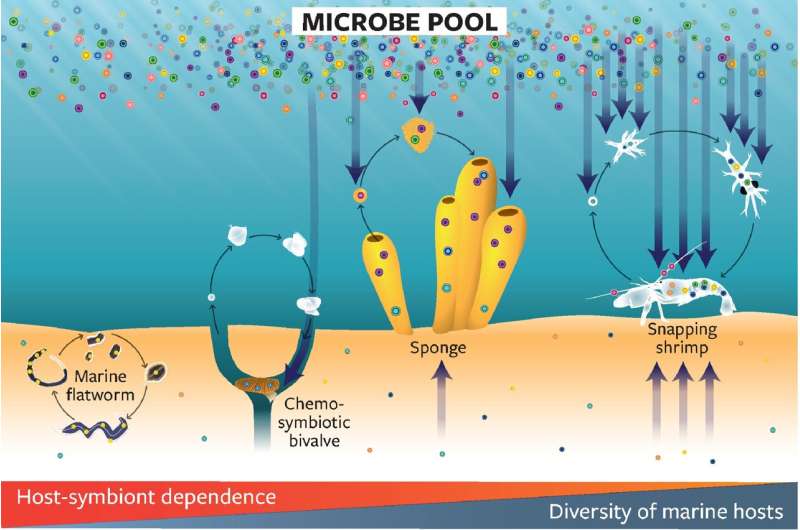More research needed into microbes that live in and on sea creatures

All animals and plants and other multicellular organisms are covered inside and out with a diverse "microbiome", communities of microorganisms. Most research has focused on microbiomes on land, but what about the microbes that live in and on the organisms that inhabit our vast oceans?
A new commentary paper publishing August 19th in the open access journal PLOS Biology, by Matthieu Leray, Laetitia Wilkins, Jonathan Eisen and many others from the Smithsonian Tropical Research Institute, the Max Planck Institute, the University of California Davis and other institutions, discusses the growing evidence that beneficial members of microbiomes play critical roles in diverse marine ecosystems, identifying areas where there are still major knowledge gaps. The authors propose a research agenda to fill these gaps and improve both our understanding of the role of beneficial microbes in the current life in the Earth's oceans but also how we might make use of such studies to improve the future of the oceans.
Much of the world's attention is focused on the rather modest number of microbial species that are seriously detrimental to their host, perhaps causing diseases, as the current pandemic has reminded us. However, most of the microbiome found in and on multicellular organisms have minimal effects on their hosts; in a way, they are just along for the ride. In addition, there is a growing appreciation and evidence for the fact that some of the members of a host's microbiome provide their hosts with beneficial effects, ranging from subtle to essential.
In the new PLOS Biology commentary, the authors focus in part on the need to think strategically about how and where to invest in the study of host-microbe interactions to obtain answers to two basic but fundamental questions: Which are the main beneficial microbes for marine life? And will they help marine animals and plants cope with ongoing threats such as seawater warming and acidification?
The scientists outline a major challenge which is that the current research model is essentially based on short-term funding allocated to small groups of scientists to work on one or a limited number of organisms and mainly in aquarium settings. Furthermore, they propose that there needs to be a move towards long-term studies of microbes across many host species in their natural environment and in areas where the environmental and evolutionary contexts are well known. Finally, they outline how this can be achieved by intensifying research on "Natural experiments" such as the formation of islands and environmental gradients where the taxonomy, ecology and evolution of animals and plants has been studied for decades.
More information: Leray M, Wilkins LGE, Apprill A, Bik HM, Clever F, Connolly SR, et al. (2021) Natural experiments and long-term monitoring are critical to understand and predict marine host–microbe ecology and evolution. PLoS Biol 19(8): e3001322. doi.org/10.1371/journal.pbio.3001322
Journal information: PLoS Biology
Provided by Public Library of Science
















